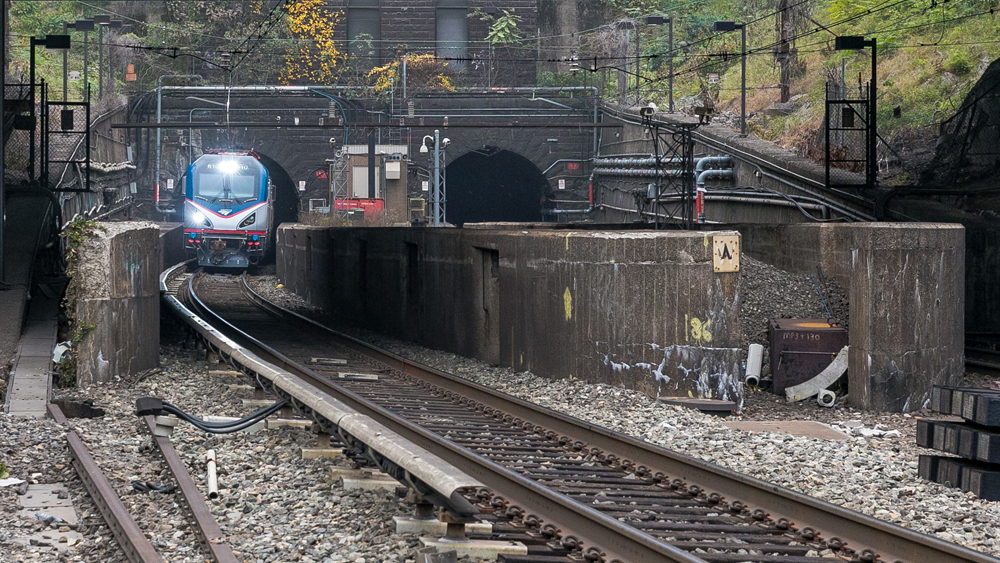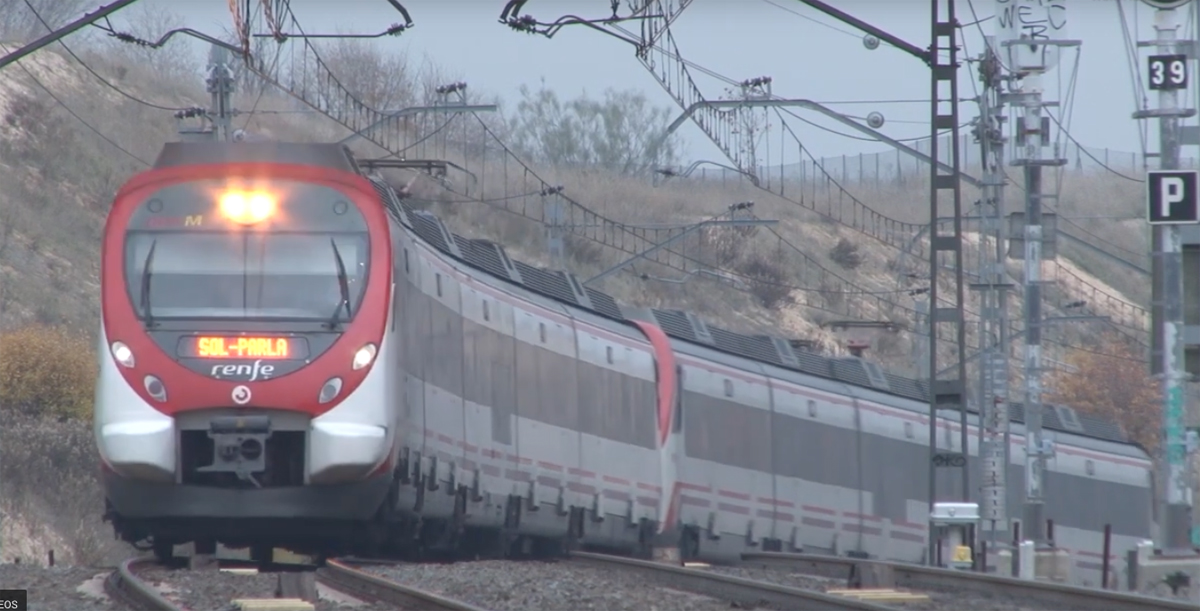
The much-discussed project to build new Northeast Corridor tunnels between New York and New Jersey has received the permit allowing construction to begin once funding is secured.
NJ.com reports the permit from the U.S. Army Corps of Engineers would allow construction of the Hudson River Tunnel to begin in summer 2023. Once the two new bores are complete, the existing 111-year-old tunnels, damaged in 2012 by flooding during Hurricane Sandy, will be rehabilitated. The $12.3 billion project will increase capacity into New York’s Penn Station and end the threat of failure of the existing tunnels, which would drastically limit rail traffic along the corridor.
“This step brings us much closer to the beginning of construction on the Hudson Tunnel Project, which is part of the single-largest critical infrastructure effort in the nation,” New Jersey Gov. Phil Murphy said in a statement. “I am looking forward to continuing to work with our partners in the Biden Administration, New York, Amtrak, and our Congressional delegation on completing the entire Gateway Program.”
The Gateway Development Corp., overseeing the project, estimates the new tunnels and rehabilitation of the existing bores could be complete in 2035. The start of work, however, remains contingent on funding, which has previously been hampered by a low ranking by the Federal Transit Administration. New York and New Jersey, which will share in the cost of the project, must also apply for loans for their share of the funding.













All that we taxpayers can do now is to pray that this doesn’t turn into another Boston Big Dig, or a Hawaii HART project.
Forgive me if I seem doubtful.
The North (Husdon) River is a US Navigable Waterway. THE US Army Corps of Engineers has jurisdiction over construction permits. USACE jurisdiction goes back to 1824.
Non-American here: why does it impact the Army Corps of Engineers?
Penelope,
If you can, read the May 1969 issue of TRAINS which was about the 100th anniversary of Promontory. It may have took six years to connect the UP and CP, but the line wasn’t completed. A lot of corners were cut (example – laying track over compressed snow) to speed up the construction to connect as far west (by the UP) or east (by the CP) as possible.
Same with CP north of the border; after the last spike was driven, there was still a LOT of rehab work needed to get it halfway usable.
Despite the more advanced 21st century technology, major projects like the Hudson River Tunnels, Texas Central and CaHSR take longer to build while ladened with bureaucracy, law suits and politics. The First Transcontinental Railroad was completed in six years beginning during the American Civil War.
Let’s see, 12+ workers died in the construction of the original tunnels. Don’t need those darn union safety and work rules mucking up our construction schedule. Peasants are a dime a dozen.
R MESSARA I can agree with you that zero deaths is the goal. I once heard a construction safety director tell us that on his previous large project, the worst it got was one injured thumb, and that was one incident too many. Surely unions have a role in safety culture but only that. Unions aren’t the prime driver of better safety. Most of the improvement in construction safety comes from the insurance companies along with an ethic that a human life matters to all of us. Union or boss or insurance carrier, anybody.
In my entire career 1970 to 2011 I knew of two construction/ maintenance deaths over hundreds of projects — two too many. One worker hit by a car while working on a road project, the other a bridge inspector whose bucket boom was hit by a boat or barge.
It will still be expensive and probably overrun but hopefully NJ work rules will apply. NYS I know has rules where mega projects have to be farmed out, so no one company is in charge, causing excess delays and prices to be elevated. The “liberal” NY Times have covered this as have other news outlets on why transit projects-and actually all infrastructure projects– are so expensive in NYC and the state as a whole. From a New York resident.
They were built by the PRR without government “help”. Plus the unions did not control the work rules like they do now. It really shouldn’t be more about 4 years at the most to get the 2 new bores done and running once construction actually starts–but I doubt that will happen.
I will be shocked if all of it is done for anything close to the $12.3B mentioned.
Because it’s a more complicated project than the existing tunnels. Must work through, around, under and over a built-up area, including the existing tunnel and Penn Station infrastructure. It’s one thing to build Penn Station 110 years ago, it’s quite another thing to tie new tunnels into it. As examples, the new freeway interchanges in Milwaukee (Zoo, Marquette and Mitchell) were greatly more complicated projects than the original construction. Just one detail, replacing the UPRR bridge over IH 41 in Wauwatosa while maintaining both rail and highway traffic is far more difficult than when the CNW bridge was first built in the 1970’s.
Good grief! A twelve year construction period!!! The current tunnels, without today’s technology did not take nearly that long.